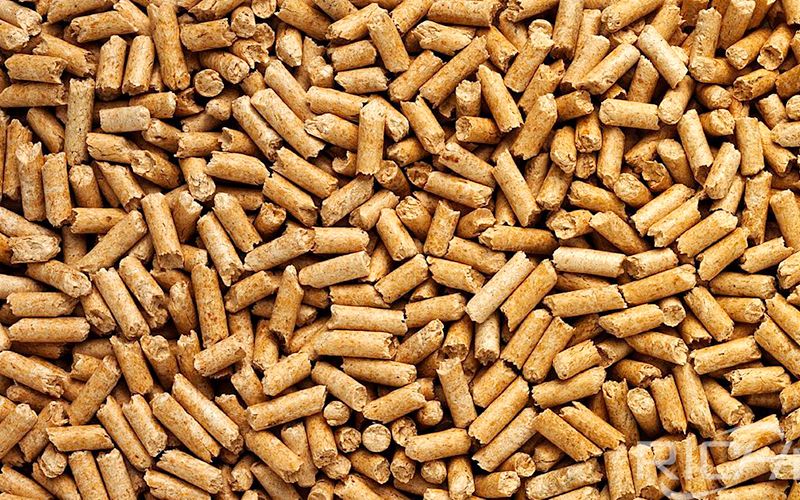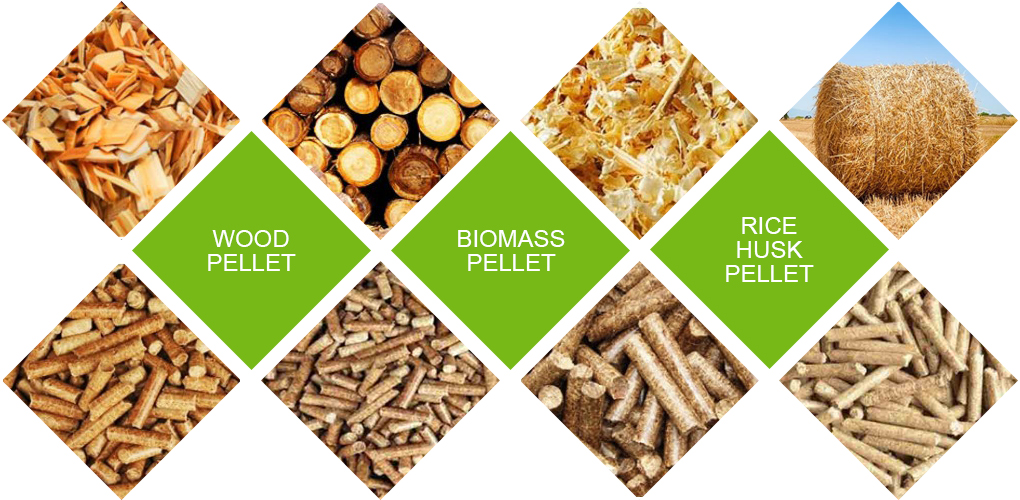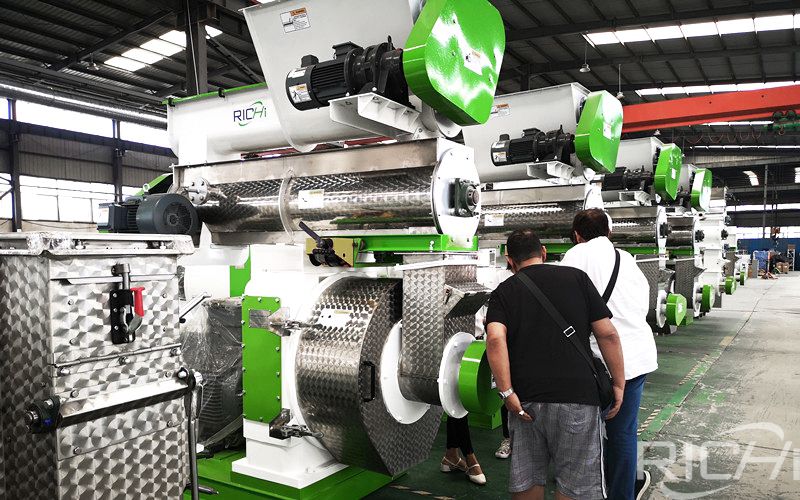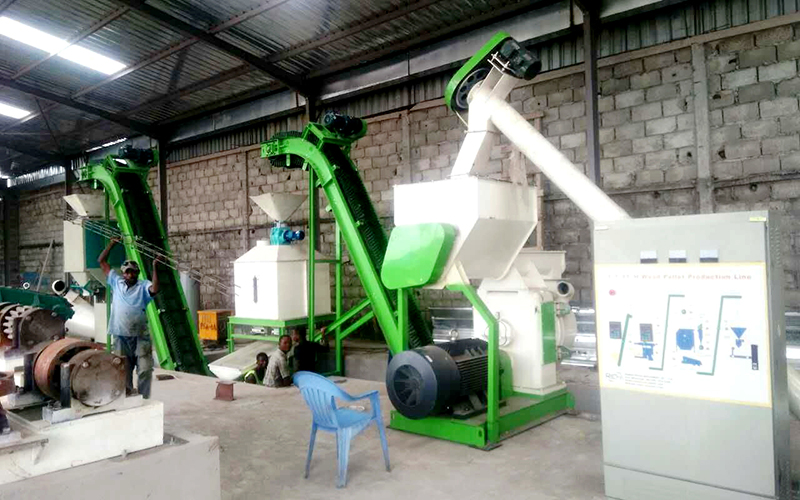
This is where you find all our press releases and news articles.
A wood pellet is not just a pellet made of wood—it is an engineered biofuel. “You can densify into pellet form darn near anything that’s organic, as long as you have a certain particle size and moisture content, and, most importantly, that the concoction stays consistent,” says Jason Kessler, owner and president of KESCO Inc., a company he founded in 2001 as a manufacturers’ representative firm. The philosophy of pellets being engineered biofuel was one Kessler learned early on in business by Chuck Limbach with Hamer Pellet Fuel Co. “He made his first pellet with his father in 1979—the earliest pellet man I ever heard of,” he says. “He enlightened me on that. You can’t think of it as just wood pellets, they’re engineered biomass pellets. You may have wood, bagasse, paper sludge—you name it. As long as you get the material dry and meter it into the process at a controlled rate, and keep it consistent, you can design a pellet process. A pellet mill is a forming device. It has to be robust, take a beating, and densify what’s presented to it. It’s not magic. That’s the concept of the engineered biofuel.”

Biomass Pellet
Plugging the press is a line that is approached at virtually all times when making wood pellets, Kessler says. “You need to generate enough frictional heat to activate the lignin in the wood, to get it to bind together,” he says. “If it’s too dry when you’re walking the line, you’ll plug the machine, spike the amp load and trigger whatever your protection device is, whether it’s tripping the breaker or breaking the pin. If it’s too moist, then the pellet quality sucks. To get good quality pellets, you have to approach that line of plugging your machine to optimize lignin activation.”
The dawn of computer programming decades ago spawned the phrase “garbage in, garbage out,” and for pellets, the same principal applies. “If you put junk in a wood pellet mill, you’ll get junk out,” says Chad Jones, product manager for feed and biofuels at Andritz. “There are product and customer specifications, and to hit them, you need consistent raw material feedstock.”
Although product quality is highly important, it isn’t the only parameter affected by inconsistent feedstock. “Consistency will greatly impact operational costs,” says Mike Curci, Andritz’s North American sales manager overseeing aftermarket capital sales. “When you look at dies and roller bearings, the compression ratio in those dies drives product quality. If your raw material moisture is 10 percent one day and the next it’s 7 percent, that drastically influences the product, and there’s a wide range in operational costs. If it jumps too much, you can lose a lot of money.”
Electricity use constitutes 30 percent of wood pellet manufacturing costs, Curci says, and pellet mills expect to use a certain range of kilowatts (kW) per ton of pellets produced. Softwood pellets may require 50 to 60 kW per ton and hardwood 70 kW per ton. “At the end of the day, they keep an eye on what that is,” Jones says. “As the material changes and it is too dry, kilowatts go up and the product becomes hot, you’re producing and running more fines, making more steam, die and roller bearing wear and grease consumption increases, and you’ve got a bigger mess to clean up. It can become unwieldy at that point. That inconsistency can lead into a whole host of other things.”
The rate at which pellets are produced is another parameter greatly influenced by feedstock consistency. “If the machine is rated at four tons an hour and the material is too wet, it’s only producing three tons an hour,” Curci says. “Now your efficiency is off, and it costs more to produce that product.”
Raw material inconsistency is inherent in this business. “It’s just the nature of the product,” Kessler says. “For instance, sap level, this changes and there’s not a darn thing any plant can do to change that. So, you need a process in place to address this when, not if, it changes.”
The quest for consistency certainly begins at procurement. “Getting a consistent source of fiber is huge,” Kessler says. “The industry would love to say we’re taking the waste streams from different facilities—sawmill residues, planer shavings, stuff like that, and there are plants doing that successfully—but that’s a whole lot of moving parts if you want to be successful. You have to get control of your raw materials.” According to Kessler, it’s no stretch to argue that big plants harvesting stands of southern yellow pine have it easier than small ones trying to bring in kiln-dried wood from seven cabinet factories dealing with hickory, oak, green sawdust and planer savings. “It’s very difficult to run a plant like that,” he says. “And these companies using treetops, limbs and slash processed in the woods—that product is inherently inconsistent.”

Biomass raw materials
Ken Upchurch, vice president of sales and marketing for Bruks Siwertell, says raw material inconsistency is a feedstock, process design and equipment issue. “It’s all of the above,” he says. Starting with the feedstock, Upchurch focuses on three material streams: roundwood, chips purchased from third-party suppliers, and residues. He says Bruks Siwertell focuses on equipment sales and service for large-scale pellet facilities, so his experience may not apply to smaller pellet mills.
“First, roundwood trees need to be debarked and chipped, and there’s process controls needed,” he says. “Step one is to remove the bark to the fullest extent. There are different ways to do this, but most commonly it’s done using a rotary debarker where the logs enter a tumbling mechanism, a big drum, and they tumble against each other knocking off a majority of the bark. The bark falls through and is segregated, and because it can be used as process fuel, it’s transported separately.” The clean logs exit the drum and move to chipping. “Most pellet manufacturers are looking for a microchip, which is 12 millimeters, or about a half-inch or less,” he says. “That’s the ideal chip size for the pellet process.” Bark and clean, white chips are stored separately.
Stream two is chips purchased from outside suppliers, which Upchurch says usually have a process similar to the roundwood procedure. “When those chips arrive, it’s important for the customer to ensure they’ve purchased clean microchips and then screen out chips larger than a half inch,” Upchurch says. “In addition, foreign particles or tramp metals, those must be removed before storage as well.”
The third stream is residues from the board and sawmill market. “This is a growing market,” Upchurch says. “Sawdust and shavings are ideal for making pellets. Many manufacturers are capturing that waste or buying it and bringing it into the pellet process.”
In the woods or tree stands, what the harvesters grab and how they handle it—whether dragging logs through the mud or keeping them upright on the truck—impacts quality and consistency as well, Jones says. “Then, if there are holes in the screens or if the chipper has dull knives, this will impact chipping so when it reaches the scale, that’s where the real fun begins,” he says. “If the material is inconsistent, or if they’re not green grinding, then the dryer takes over, and the dryer has a tough time with some dry, some wet, and some in between. Then the hammer and pellet mills have to deal with that.”
Southern yellow pine chipped at 25 to 35 percent moisture produces higher-quality chips versus 15 to 20 percent moisture, according to Curci. “It’s easier for the chipper to chip wetter wood,” he says. “It acts as a lube. Chip quality improves and it is better for the knives.”
At the scale—where the material is delivered to the facility—is where close attention by the pellet manufacturer must be paid on consistency and quality, Curci says. “Many locales bring in bush tips or whole tree ground tips, so it starts when this crosses scale and then every step from there,” he says. “Many times, you can mitigate those issues if you’re blending properly. If not, what happens is you may not have issues in the green hammer mill, dryer or the dry hammer mill, but the issues will come to light in the pellet mill. Different woods pelletize at different rates.”
It’s all about raw material inventory management, according to Kessler. “That’s on both the green and dry sides of things, which are two different animals,” he says. “Coming off the dryer, are you putting it on the ground in the warehouse? Is the dried material being loaded into the process with a frontend loader or into a silo? If in a silo, is it first-in, first-out, or is it counting on gravity flow?”
Kessler says companies drying microchips are more at the mercy of their raw material chip quality than those that are hammer milling their green chips. “Some companies take logs, chip them down to a half-inch minus, screen them and then take the overs and send them through re-chippers, or a slow-speed wood hog that doesn’t explode the fiber like a high-speed hammer mill,” he explains. “But if you take green chips and run them through a high-speed hammer mill process, it neutralizes some of the inconsistencies of the chip quality. Now the dryer is seeing a more consistent product and drying efficiency can be dialed in—and if you do that, it’s a chain reaction from there. Everything benefits from that.”
He says for companies that are green hammer milling, drying and then dry hammer milling, the dry hammer mills are 35 percent more efficient. “That’s massive,” Kessler says. “It’s 35 percent more throughput on the dry hammer mill with less horsepower on material that had been pre-ground with a high-speed, green hammer mill.” As to why, he can only speculate.
“Here’s what I suspect,” he says. “Perhaps when sending microchips to the dryer, it could be a case where it’s hardening the outside of that chip. They see this in the planer mills. When they dry lumber too quickly in the kilns, the case hardens, and planer mill capacity goes to hell. I think we may be seeing the same thing on these chips when they’re dried at high inlet temperatures to destroy the volatile organic compounds (VOCs), hitting them with hot air, which is case-hardening the chip and making it difficult to grind in the dry hammer milling islands.”
The type of stacker reclaimer used by pellet manufacturers—the biggest part of the woodyard—may also have a significant impact on raw material consistency. The chips are conveyed to the stacker, a big boom essentially, which “stacks” the chips into monster-sized piles that are oftentimes either horseshoe-shaped or linear. The reclaimer, in some over-pile designs as Kessler explains it, is like a drag conveyor chain saw that lays on top of the pile that drags material from the top of the pile, dropping it into the conveyor and on through the process. “This is an area of inconsistency,” he says. “If you’re putting chips in a pile and then raking layers off the top, what’s happening to the chips on the bottom of the pile? They’re decomposing or not drying. Either way, they’re different than the fresh ones on top.” He says bottom or under-pile reclaimers offer true first-in, first-out. “That’s an important factor,” Kessler says. “But most plants don’t use this type. It could help. It’s all about decreasing inconsistencies where you can.”
Bruks Siwertell makes many variations of stacker reclaimers. “We supplied Enviva’s Greenwood, South Carolina, pellet mill with our 360-degree stacker reclaimer,” Upchurch says. “The theory behind that is true first-in, first-out, with the 360-degree design, reclaiming material from the bottom screw auger and harrow system. This provides a very homogenized and well-blended material base.”
Pros and cons exist for each design. Upchurch says Drax’s Louisiana facility uses an over-pile design manufactured and supplied by Bruks Siwertell. “It’s not a true first-in, first-out but it’s managed inventory,” he says. “The customer knows when the material was received, and they can stack and reclaim accordingly. Both offer managed inventory control. The 360-degree machine has more elaborate civil requirements, going underground to reclaim.” Upchurch says of the seven industrial-size pellet plants Bruks Siwertell has built, customers have only opted for the 360-degree design in one scenario. In addition, contracts for future plants are also over-pile. “There’s a lot of debate over what’s the best way to store,” he says. “Everyone agrees automated storage is the way to go, and controlled inventory. After grinding and drying, first-in, first-out is a nonissue, as long as it’s not out there for long periods of time.” Upchurch says most customers turn the pile over every 10 days. “It’s hard for us to justify to the customer the added expense for first-in, first-out, as long as inventory is properly managed and remains uncontaminated and controlled,” he explains.
In addition to the various stacker reclaimers Bruks Siwertell manufactures, Upchurch says the company specializes in most woodyard equipment on the green side: roundwood receiving, microchippers, conveyors, including to and from the stacker reclaimer, and screening and grinding machines. On the truck-receiving side, Bruks Siwertell makes and provides truck tippers, screening, hoppers and tramp metal removers. “Basically, we make everything in the woodyard except the debarking drum itself,” Upchurch says. “And we make the interconnecting conveyors.” Bruks Siwertell also makes green and dry hammer mills, and hammer mill system solutions.
Andritz manufactures several different hammer mills, Jones says, from 12 to 60 inches wide ranging from 50 to 600 horsepower, which can accommodate any number of screen sizes from as common as 1/8 inch to 3/8 inch on the dry side. But the 43-inch series is tailored for and most popular with wood milling. On pellet mills, Andritz offers the 26LM, a belt-drive mill, the 32LM, which features a belt drive with a gear reducer, and the gear-driven 30PM.

Wood Pellet Mill
Andritz also makes a very important piece of equipment that sits atop the wood pellet mill: the conditioner. This is particularly important in the context of raw material consistency. The conditioner adds water, steam or oil to the processed wood prior to pelleting. “Adding moisture allows you to make up for inefficiencies elsewhere,” Curci says. “Nearly every pellet mill we sell—95 percent of them—has a conditioner.” The conditioner also helps evenly distribute feeding of the material to the pellet presses. “You don’t want to see the mill surging,” he says. “Consistent feeding is important, or you’ll run into a series of issues.”
Companies such as Andritz and Bruks Siwertell don’t just make equipment, deliver the machines and wipe their hands. They are also there to help the customer. And by the very nature of Kessler’s business as a manufacturers’ representative, KESCO does too. For instance, KESCO was hired by Nature’s Earth Pellets NC in Laurinburg, North Carolina. The customer wanted to use various types of wood with a range of moisture and hardness. Kessler says he designed the plant’s storage system, so each material is stored in separate bins with circular screw reclaimers by Laidig Systems Inc. at the bottom, with the discharge screw in each one on a variable frequency drive.
“The pellet operator can dial up their concoction,” he says. “Give me 50 percent dried hardwood, 40 percent southern yellow pine shavings, and 10 percent kiln-dried hardwood.” The screws meter the material out, which drops to a high-pressure line, then runs through the hammer mill and on to the presses. “It was very consistent,” he says. “If the operator sees pellet quality going to hell, looking like an overcooked hotdog in a microwave, then this means there’s too much moisture, or in their case too much southern yellow pine shavings with higher moisture content, so they dial that back and increase the hardwood. Total control of raw materials is the name of the game in the pellet business. So many plants are victims and stand at the mercy of raw materials.”
Margins are thin in this business, Curci says, and optimizing a facility is important. Andritz offers optimization reviews for its customers. “We’ll look at a woodyard or walk through the facility and make recommendations along the way. Hammer mills, pellet mills, coolers, screeners—that’s our core focus, but we start up front.” He says Andritz reviews everything, from power costs and usage to the life of the dies and roller bearings and how to best set them, to what the pellet quality is they’re producing and whether they’re off-spec. “We offer those services quite often,” Curci says. The company also holds a two- or three-day “pellet mill bootcamp” for operators, in the classroom and the field, training them on OEM standards, pellet theory, size reduction and more. “It’s not only for our customers, but also for those operating other brands because we service them as well, and provide parts,” Curci says. “It’s absolutely been successful.”

Biomass pellet plant
Jones says Andritz’s service begins with plant and process conception. “We have discussions about what they envision the process like in their minds, conceptually,” he says. “And we keep in contact as they progress, and we offer suggestions as they go.”
Curci adds that Andritz wants any project it assists to be successful from day one. “No one is successful if it starts up and fails,” he says. “It’s about the three M’s—money, market and material. So that material we’ve been talking about, if that goes missing, just like a three-legged stool, it will fall.”
The first pellet mill Bruks Siwertell was involved in was the Green Circle Bio Energy plant in Panama City, Florida, now owned by Enviva. “We learned a great deal from that, and since then, we positioned ourselves well in the industry to build subsequent plants. Drax leaned on us to design its facilities, as well as Enviva and some medium-sized producers.”
Services offered by Bruks Siwertell include working on the frontend of the plant with the customer, making sure they fully understand the scope of what the facility will look like, and helping to spec- and scope-out equipment supply. “Layout and real estate requirements, permitting—we help develop the plant,” Upchurch says. “Once they’re moving forward, we include mechanical and electrical construction in our scope, for our equipment. We see a lot of contracts where they want a one-source supplier—equipment, design, mechanical and electrical installation, all released on one order. We offer that advantage.”
After the sale and once the equipment is operational, Bruks Siwertell offers a parts consignment program. “We can respond to customer needs promptly,” Upchurch says, “whether it’s field service, maintenance crew inspections, or making sure their equipment is properly maintained and serviced. It gives us a big sales advantage to offer all the products we do, and in conjunction provide turnkey packages for them.”
Process audits will help identify areas of inconsistency, says Kessler. “Let’s say the last mill on their line is not getting a consistent feed rate,” he says. “Maybe that’s because the raw material is not getting to it, it’s starving the last one on the line. They might benefit, for instance, in putting a choke load feed system in to make sure all the presses are getting the proper amount of feed.”
He says many producers put the reject flow right back into their silos. “Fines don’t pelletize worth a damn,” he says. “Fines create more fines and the snowball starts rolling. The best thing to do is one of two things—ideally you want to burn them for fuel and get them out of here. Most bean counters say you need to pelletize them, but it’s [killing them]. Burn it and be done with it. If you can’t, or someone won’t let you, then put them in a bin with a circular screw reclaimer so you can provide a meter-controlled flow to the raw material flow. If you have a dry hammer mill island, have a fines-return system meter material into that leading into the pellet presses. Put a second discharge screw on that fines-return bin so if you get too much and the bin is too full, dump it on the ground—don’t just slam it into your product. It’ll kill you.”
Pellet manufacturers can also make “small-wrench adjustments,” Kessler says, such as playing with the dryer, adjusting the feed rate, modifying the particle size with the hammer mill screen, increasing moisture through water, steam or oil (from conditioners) or decreasing moisture by adding starch. “Other than that, there’s not a lot you can do,” he says. “For the most part, many plants are at the mercy of their product.” In other words, sometimes they’re killing it, and at other times they’re getting killed. “Largely this industry is still in its infancy,” he says. “It’s still fine-tuning the inconsistencies that cause inefficiencies. It’s a learned thing.”
Having the right mix of reliable, high-quality pellet machine and pelletizing systems and expert support is essential to your success. Watch how our end-to-end feed pellet plant solutions have helped our customers optimize their performance.
Our customized and future-proofed turnkey pellet plant solutions is designed with you at the core. From vision to reality and beyond, our team stays connected with yours. Giving you peace-of-mind with an expert at your side.

At RICHI, we go beyond project completion. With RICHI Servicee, we’re your dedicated partners in success. Count on us for expert guidance, minimal downtime, and optimized productivity. Choose RICHI for unmatched service and support.



Meet global product demands and quality standards with industry-leading pellet plant design, engineering, equipment, and construction services for pellet processors.


Your Partner Beyond Project Completion
2000+ cases
RICHI is the leading designer, manufacturer and builder of pellet plants in the world, completing over 2000 projects in 140 countries across 6 continents.
Read More
Increase plant productivity, profitability, and safety by integrating high quality equipment into your pellet production line. Over the years, RICHI has become China's top pellet equipment manufacturer. At the same time, RICHI has established valuable partnerships with the world's leading component and raw material manufacturers to bring you the best there is in technology, automation, and efficiency in pelleting plant machinery.

For nearly 30 years, RICHI has been providing best-in-class pellet plant equipment and services to clients across a variety of industries, sizes, and needs. We pride ourselves on the knowledge and skill that each team member possesses – from our technical sales team to our process design engineers. You can count on RICHI Machinery to take your operation to the next level of innovation, quality, and success.
Need help with your pellet manufacturing plant project? Contact us today.
ANIMAL FEED
BIOMASS
WOOD
ORGANIC FERTILIZER
AQUA FEED
CAT LITTER
MUNICIPAL WASTE RECYCLING
SPECIAL PELLET PRODUCTION
RICHI Machinery continues to deliver world class pellet mill equipment, pellet plant engineering and project solutions that add value to our customers in the animal feed, wood waste, agriculture waste, organic fertilizer, cat litter and special pellet products industries. Throughout the years, we RICHI Machinery have built strong brand, becoming industry-leading pellet machine manufacturer. We value integrity, promise quality, and prioritize your success.
Learn MoreWith our expert team, we precisely implement your process engineering requirements in pellet mill and pelletizing plant systems. No matter which industry you’re in – we understand your needs and deliver solutions that meet the highest standards.
At RICHI, quality comes first. Our pellet making machine and related pellet line equipment undergo rigorous quality controls to ensure they meet the highest standards. Rely on products that are durable, safe, and efficient.
With decades of experience in pellet machine and pellet production line production, we have earned a reputation as a trusted partner in various industries. Our expertise allows us to cover a wide range of applications.
Not only do we offer premium pelleting equipment, but we are also experts at designing, building, installing, and maintaining facilities from the ground up. Our expertise is within pellt plant process design, discovering the most efficient, productive, and profitable way to handle your materials in an end-to-end cycle.

Keeping in touch with us is an effective way to solve all your problems. If you have any needs or questions, please leave your contact information, then RICHI technical consultants will send design, quotation, videos to your mailbox. You can also contact us directly via WhatsApp: +86 13838389622
Copyright©2015-2024 by HENAN RICHI MACHINERY CO., LTD. All rights reserved.